
Staying safe while storing and using petrol
Before addressing some of the specific issues relating to the safe storage of petrol and any current legislation in respect of it, it is worth reminding everyone of the potential risks and some general advice on the matter.
We’re sure the vast majority of people out there are very aware of the dangers associated with petrol and the potential consequences if it is not handled in the right way.
Petrol in the workplace, and at home, needs to stored very carefully, and while most of us are familiar with the risks of petrol, how many of you are aware of the amounts that can be stored in specific situations such workplace premises, non-workplace premises and at home?
Petrol is a dangerous substance; it is a highly flammable liquid that gives off vapour which can easily be set on fire, and when not handled safely has the potential to cause a serious fire and/or explosion.
This means there is the risk of serious personal injury if petrol is stored or used in an unsafe way in addition to potential destruction of property and possibly the loss, be it temporary or permanent, of your business or organisation and the potential impact that has on your livelihood.
Because of these risks legislation is in place in respect of storing petrol safely, namely the Petroleum (Consolidation) Regulations 2014; and this legislation applies to you if you store petrol at home, or in circumstances where it may be used at premises such as a club or association where you might take part in leisure activities.
Following some basic advice can eliminate, or significantly reduce, any risks associated with the storage and use of this potentially dangerous and volatile substance:
- Don’t store petrol unless you have to.
- If you do have to store petrol STORE IT SAFELY!
- Do not take petrol into any house, flat or anywhere where people live.
- Keep it out of the reach of children.
- Keep it out of direct sunlight.
- Keep it away from sources of ignition such as naked flames and anything that has the potential to cause or a spark.
Remember, an empty container that has previously held petrol may also be unsafe because of the fumes which can remain in the container. Keep the cap of the container securely fastened and follow the same advice as for storing petrol.
At the petrol filling station
Follow petrol station safety instructions whenever you are filling your petrol tank or portable container. Containers must be placed on the ground when filling.
Always dismount from your motorbike before filling the petrol tank
Gardening activities
Make sure your petrol fuelled lawn mower has cooled down before refilling it with petrol. And only fill the tanks of lawn mowers or any other machines in the open air away from buildings.
Lighting BBQs or bonfires
DO NOT use petrol as an accelerant to light fires.
Typical uses of petrol at work and at home
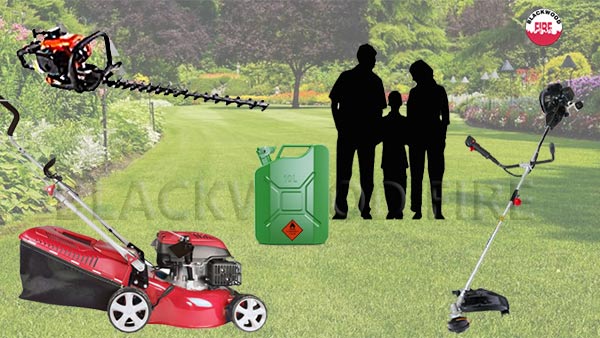 There are many businesses and organisations that use petrol in their everyday activities. Typical examples might include for use in vehicles and motorbikes, but also for use with petrol generators, petrol lawnmowers, petrol strimmers and brushcutters, petrol pressure washers, etc. There are also many individuals that use petrol at home for a variety of reasons but probably most commonly for use with garden equipment such as lawnmowers and for the same purposes that a business might use it.
There are many businesses and organisations that use petrol in their everyday activities. Typical examples might include for use in vehicles and motorbikes, but also for use with petrol generators, petrol lawnmowers, petrol strimmers and brushcutters, petrol pressure washers, etc. There are also many individuals that use petrol at home for a variety of reasons but probably most commonly for use with garden equipment such as lawnmowers and for the same purposes that a business might use it.
If you use petrol-powered equipment, then the chances are you also store petrol somewhere on the premises.
Why is storing petrol a potential hazard?
 The vast majority of people are probably very aware of the hazards associated with petrol. It is a very dangerous substance and has the potential to create an awful lot of damage if not handled correctly. It has the very real potential to endanger people’s lives, possessions and livelihoods.
The vast majority of people are probably very aware of the hazards associated with petrol. It is a very dangerous substance and has the potential to create an awful lot of damage if not handled correctly. It has the very real potential to endanger people’s lives, possessions and livelihoods.
Petrol is highly flammable and also gives off vapour. This means that it has highly dangerous properties that can quite easily lead to fires and explosions if not given the respect it deserves and handled safely. Sources of ignition, near to where petrol is stored, can have very severe consequences. Naked flames and anything that has the potential to cause or a spark, are obvious risks.
Are there any laws or legislation covering the storage of petrol?
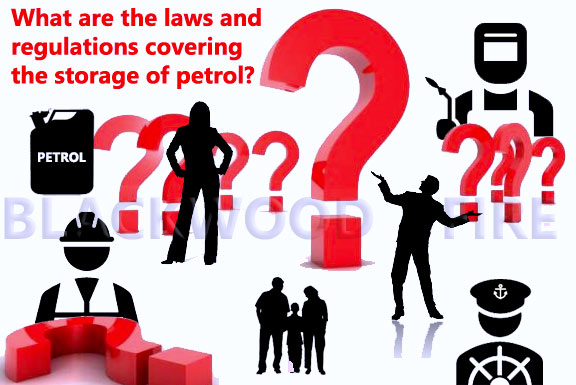 Yes, if you store petrol, then you are subject to the legislation that covers its safe storage.
Yes, if you store petrol, then you are subject to the legislation that covers its safe storage.
The specific UK legislation relating to storing petrol safely are dealt with in the following laws and regulations:
- The Petroleum (Consolidation) Regulations 2014 (PCR)
- Dangerous Substances and Explosive Atmospheres Regulations 2002 (DSEAR)
The Petroleum (Consolidation) Regulations 2014 (PCR)
This legislation came into force on 1 October 2014 and includes the following:
- Introduction and general prohibition on the keeping of petrol
- Storage of petrol on dispensing premises
- Storage of petrol in domestic or other relevant premises
- Miscellaneous provisions
The full text of the legislation can be found can clicking on this The Petroleum (Consolidation) Regulations 2014 (PCR) link but in summary some of the areas it covers are:
- General prohibition on the keeping of petrol
- Storage of petrol on dispensing premises under certificate
- Application and grant of storage certificates
- General prohibitions on dispensing and supply of petrol
- Storage of petrol in domestic or other relevant premises
- Licences for storage in domestic or other relevant premises
- Enforcing authorities
- Manufacture etc. of portable petrol storage container
- Repairs of vessels or containers that have contained petrol
- Prohibition on direct filling of fuel tanks from road tankers
Authorities known as ‘Petroleum Enforcement Authorities’ (PEAs) are responsible for enforcing the Petroleum (Consolidation) Regulations 2014.
Dangerous Substances and Explosive Atmospheres Regulations 2002 (DSEAR)
The DEAR regulations cover more than just petrol and apply more generally to dangerous substances in the workplace that, if not properly controlled, have the potential to cause harm to people as a result of a fire or explosion or corrosion of metal. These might include some of the following and are found in many workplaces:
- solvents,
- paints,
- varnishes,
- flammable gases,
- dusts from machining and sanding operations,
- dusts from foodstuffs,
- pressurised gases and
- substances corrosive to metal.
The DSEAR regulations place duties on employers and the self-employed to protect people from these risks to their safety in the workplace includes members of the public who may be put at risk by work activity.
The Health & Safety Executive have provided useful information on the regulations which you can access by following the link to ‘A Quick Guide to DSEAR’.
Who does the law on petrol apply to and where can I find out more?
 The Petroleum (Consolidation) Regulations 2014 cover many situations and go into a lot of detail on specific areas, which would be too much information to include in this advice article. We hope to provide more in depth, dedicated articles on some or all of these areas in the future but, for the purposes of this article, we have provided a summary of the main points below.
The Petroleum (Consolidation) Regulations 2014 cover many situations and go into a lot of detail on specific areas, which would be too much information to include in this advice article. We hope to provide more in depth, dedicated articles on some or all of these areas in the future but, for the purposes of this article, we have provided a summary of the main points below.
If you are the owner of a fuel filling station, or an employee working at a fuel filling station, then we strongly recommend reading the guidance provided by the Health & Safety Executive (HSE). As you would hopefully expect, the legislation covers a wide range of topics including:
- Petrol licences and storage certificates
- How do I know if my workplace petrol dispensing activities require a petroleum storage certificate?
- Can conditions be applied to the storage certificate?
- What is included on my storage certificate?
- Notifying the Petroleum Enforcement Authority of changes associated with the storage and dispensing of petrol.
- Are under-age sales prohibited?
- Can containers be filled at a petrol station?
- How many containers can be filled at a petrol station?
Further information can be found at If you are an owner/employee of a petrol filling station on the Health & Safety Executive (HSE) website.
How do I store petrol safely in my home ‘Non-Workplace Premises’?
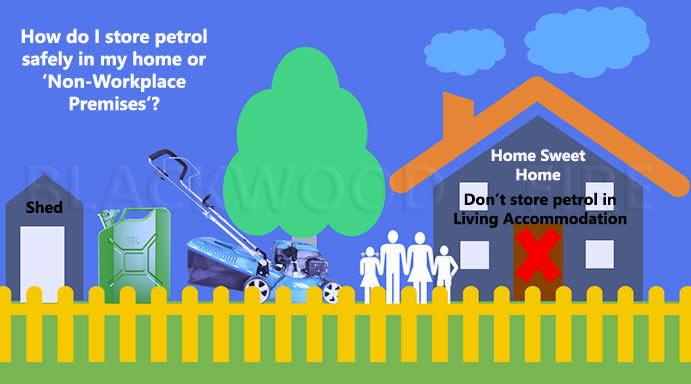 The advice provided by the Health & Safety Executive (HSE), and taking consideration of the information provided above, is that:
The advice provided by the Health & Safety Executive (HSE), and taking consideration of the information provided above, is that:
If you are storing up to 275 litres of petrol at any of these premises then you should be aware of the common storage requirements for these amounts, which are as follows:
- petrol is not stored in your living accommodation
- petrol is not dispensed (i.e. it is not pumped either manually or electrically from a storage tank) at your storage place
- if your storage place is not in the open air you need a direct exit to the open air and ventilation to this exit
- you should take all reasonable precautions in your storage place to prevent any sources of ignition or heat that would be able to ignite the petrol or its vapour
You should not use petrol in the storage place other than
- in the fuel tank of any internal combustion engine
- in quantities (not exceeding 150 millilitres at any one time), for cleaning or as a solvent for repair purposes
Where petrol is stored in a place attached to a building, e.g. an integral garage, if the fire resistance requirements in the previous legislation were met then these would be considered acceptable under the new regulations and storage can continue. For example, an older house with an integral garage (that has a room above it) that met the requirement for the ceiling to be 'constructed of material not readily flammable' would be considered as acceptable and would not have to meet the requirement in the new regulations that the ceiling of such a garage is fitted with 'fire-resistant internal linings'.
How much petrol can I store in a ‘Non-Workplace Premises’ and/or at home?
 You can store up to 30 litres of petrol at home or at non-workplace premises without informing your local Petroleum Enforcement Authority (PEA).
You can store up to 30 litres of petrol at home or at non-workplace premises without informing your local Petroleum Enforcement Authority (PEA).
You can store it in:
• suitable portable metal or plastic containers
• one demountable fuel tank
• a combination of the above as long as no more than 30 litres is kept
The Health and Safety Work Act, etc. 1974 defines ‘premises’ for these purposes but include, for example;
• Motor vehicles,
• Boats
• Aircraft.
Am I allowed to store more than 275 litres at my home or Non-Workplace Premises’?
 You can do this but only if your local Petroleum Enforcing Authority (PEA) have given you a licence that allows to store petrol at your premises.
You can do this but only if your local Petroleum Enforcing Authority (PEA) have given you a licence that allows to store petrol at your premises.
Yes, provided you have a licence to store petrol at your premises issued by your local Petroleum Enforcing Authority (PEA). Your local PEA can issue you with a licence
if you are storing more than 275 litres of petrol, and the licence can include conditions relating to your storage and dispensing arrangements.
If you do not have a licence to store petrol, you should not dispense petrol into the tank of vehicle with an internal combustion engine, either by manual or electrical means.
Any questions regarding dispensing of petrol at your home, club or association should definitely be discussed with your local Petroleum Enforcing Authority (PEA).
Does the legislation specify what type of containers I can use to store petrol?
 Yes, in short, the legislation permits you to store petrol in the following containers subject to specific requirements that are expanded upon further below:
Yes, in short, the legislation permits you to store petrol in the following containers subject to specific requirements that are expanded upon further below:
- plastic containers storing up to 10 litres
- metal containers storing up to 20 litres
- demountable fuel tank up to 30 litres
The Petroleum (Consolidation) Regulations 2014 (PCR) at Schedule 2, para 6, and in Schedule 3, are that:
It is a “suitable portable container” if it
- is in a good state of repair, secure from leaking, has not degraded from exposure to chemicals or light and is not unsteady when placed on a level surface; and
- A portable petrol storage container must have a nominal capacity no greater than 10 litres if made of plastic; and no greater than 20 litres if made of metal;
- have a total capacity between 10% and 15% more than the nominal capacity;
- be made of either metal or plastic that is suitable and safe for the purpose and will not significantly degrade due to exposure to petrol or naturally occurring ultra-violet radiation;
- be designed and constructed so that:
- it is reasonably robust and not liable to break under the normal conditions of use;
- the escape of liquid or vapour is prevented;
- petrol can be poured safely from it; and, it is not unsteady when placed on a flat surface;
- be marked or labelled in a legible and indelible form with:
- the words “PETROL” and “HIGHLY FLAMMABLE”;
- an appropriate hazard warning sign;
- the nominal capacity in litres; and
- the manufacturer’s name and the date and month of manufacture.
“Nominal capacity” mentioned means the maximum volume of liquid that the container is intended to hold at 20°C;
“Total capacity” mentioned means the maximum volume of liquid that the container would hold if filled to the brim.
The above information is only a summary of some of the requirements of The Petroleum (Consolidation) Regulations 2014 (PCR) and we strongly recommend you make yourself familiar and/or take appropriate professional and legal advice with regards to the PCR.
The Health & Safety Executive (HSE) provide more information which can be accessed at portable petrol storage containers.
Can I store petrol in my own vehicle?
 Subject to the requirement that the petrol is in suitable containers, you are allowed to store up to 30 litres of petrol. The fuel must be stored in a maximum of two such suitable containers.
Subject to the requirement that the petrol is in suitable containers, you are allowed to store up to 30 litres of petrol. The fuel must be stored in a maximum of two such suitable containers.
A vehicle, in terms of the regulations, can take many forms and includes, for example, boats and aircraft, amongst other types of vehicle. You should also be aware, if it’s relevant to you or your organisation, that storing petrol in this way can counts towards you store at non workplace premises.
Am I allowed to dispense petrol into the tank of my vehicle at my home, club or my association?
 You can do this but only if your local Petroleum Enforcing Authority (PEA) have given you a licence that allows to store petrol at your premises.
You can do this but only if your local Petroleum Enforcing Authority (PEA) have given you a licence that allows to store petrol at your premises.
Yes, provided you have a licence to store petrol at your premises issued by your local Petroleum Enforcing Authority (PEA). Your local PEA can issue you with a licence
if you are storing more than 275 litres of petrol, and the licence can include conditions relating to your storage and dispensing arrangements.
If you do not have a licence to store petrol, you should not dispense petrol into the tank of vehicle with an internal combustion engine, either by manual or electrical means.
Any questions regarding dispensing of petrol at your home, club or association should definitely be discussed with your local Petroleum Enforcing Authority (PEA).
What if you design, manufacture or supply portable petrol storage containers?
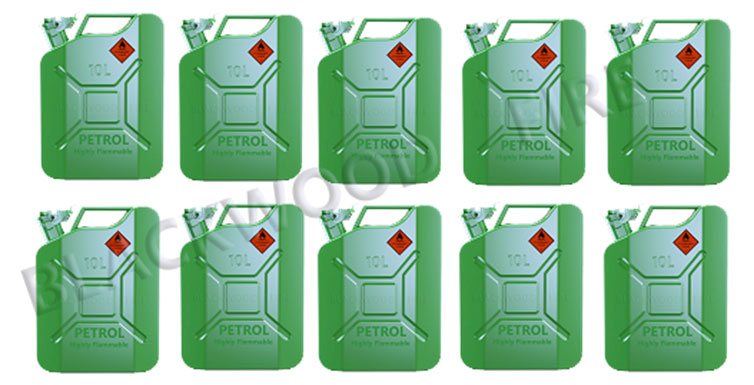 The Petroleum (Consolidation) Regulations 2014 contain the basic design safety features of petrol containers. Petrol containers that are, or have been, manufactured to this standard can continue to be sold for use in GB until 1 October 2016.
The Petroleum (Consolidation) Regulations 2014 contain the basic design safety features of petrol containers. Petrol containers that are, or have been, manufactured to this standard can continue to be sold for use in GB until 1 October 2016.
Also, from 1 October 2014 petrol can be stored in larger plastic or metal containers.
Are there any specific requirements for manufacturing petrol containers?
The general principles for portable petrol storage containers are set out in the Petroleum (Consolidation) Regulations 2014. They must be designed and manufactured as follows:
- have a nominal capacity
- no greater than 10 litres if made of plastic
- no greater than 20 litres if made of metal
- have a total capacity between 10% and 15% more than the nominal capacity
- be made of either metal or plastic that is suitable and safe for the purpose and will not significantly degrade due to exposure to petrol or naturally occurring ultra-violet radiation
- be designed and constructed so that:
- it is reasonably robust and not liable to break under the normal conditions of use
- the escape of liquid or vapour is prevented
- petrol can be poured safely from it
- it is not unsteady when placed on a flat surface
- be marked or labelled in a legible and indelible form with:
- the words ‘PETROL’ and ‘HIGHLY FLAMMABLE
- an appropriate hazard warning sign
- the nominal capacity in litres
- the manufacturer’s name and the date and month of manufacture
The following pdf document contains guidance from the Health & Safety Executive (HSE) on the design and manufacturing of portable petrol storage containers.
What if your workplace stores petrol but does not dispense petrol from a storage tank?
 The Petroleum (Consolidation) Regulations 2014 does not apply at workplaces that do not dispense petrol; dispensing petrol means the manual or electrical pumping of petrol from a fixed storage tank into the fuel tank of a vehicle with an internal combustion engine, i.e. retail and non-retail petrol filling stations.
The Petroleum (Consolidation) Regulations 2014 does not apply at workplaces that do not dispense petrol; dispensing petrol means the manual or electrical pumping of petrol from a fixed storage tank into the fuel tank of a vehicle with an internal combustion engine, i.e. retail and non-retail petrol filling stations.
The regulations are not intended to bring in certification for workplaces that are not currently licensed. Therefore, workplaces such as golf courses, scrap metal/salvage yards, etc. would not routinely fall under the storage requirements of the regulations. At those premises where there may be dispensing of petrol into containers, such activity is considered ancillary and not of the scale intended to be covered by Part 2 of the regulations.
Your workplace continues to be covered by:
- The Dangerous Substances and Explosive Atmospheres Regulations 2002 (DSEAR)
- The Dangerous Substances and Explosive Atmospheres Regulations 2002. Approved Code of Practice and guidance
What if we store and use petrol at our workplace as part of a work activity?
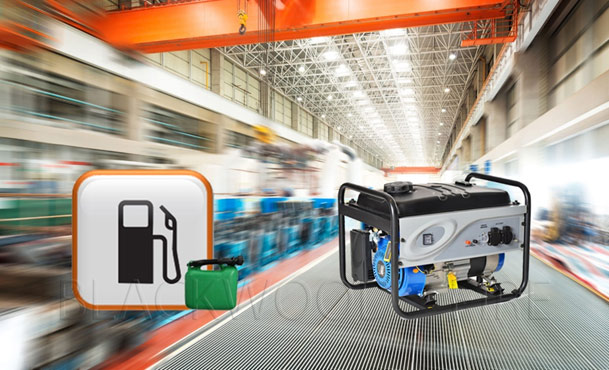 Can I fill a UN approved container for petrol, which I use as part of my work activities, at the local petrol filling station?
Can I fill a UN approved container for petrol, which I use as part of my work activities, at the local petrol filling station?
Yes, as part of a work activity, you can fill UN Approved containers for petrol which have a larger capacity than PCR 2014 gives for a suitable portable petrol container. This is provided all the following requirements are met.
- You have the prior agreement of the petrol filling station.
- The containers you fill as part of your work-related activity are:
- The risk assessment you prepare for using the containers at your workplace should include the filling activity at the petrol filling station; and you should share this risk assessment with the petrol filling station.
As part of their risk assessment, the petrol filling station may want to agree specific arrangements with you regarding the filling of your containers e.g. specify which pump they want you to use, time of day when you can fill your containers etc. They may also want to put this agreement in writing.
This relates only to the filling of UN Approved containers for petrol at retail petrol filling stations as part of a work activity.
This does not apply to the filling of containers which do not comply with the requirements in the regulations relating to a suitable portable petrol container, when the containers are filled as a non-work activity.
The petrol filling station, your workplace, and work activities involving the filling, storage and use of the UN Approved containers for petrol, continue to be covered by the Dangerous Substances and Explosive Atmospheres Regulations 2002 (DSEAR), with the requirement to assess the risk from dangerous substances and minimise the risk.
The content on this page contains public sector information licensed under the Open Government Licence v3.0.
Please note that any images forming part of this advice article are for illustrative purposes only and may not be indicative of colours, labelling or markings relating to any country specific legislation, guidelines or standards. Written information and guidance relate to the United Kingdom and specifically to information provided by the Health and Safety Executive (HSE) and other UK public sector bodies.
Information herein is primarily provided for the purposes of managing fire risk. However, in order to give the reader a more complete understanding of the storage and handling of toxic and flammable substances in drums and cylinders, we have provided additional information. If you need specific advice or information on matters not directly related to fire risk management, you should consult an expert with the appropriate knowledge and/or the supplier or manufacturer.
Disclaimer: INFORMATION PROVIDED ON THIS WEBSITE IS NOT INTENDED TO BE TREATED AS PROFESSIONAL ADVICE AND SHOULD NOT UNDER ANY CIRCUMSTANCES BE USED AS A SUBSTITUTE FOR PROFESSIONAL ADVICE. ALWAYS CONSULT A FIRE PROFESSIONAL, OR OTHER RELEVANT PROFESSIONAL, FOR ADVICE ON YOUR PARTICULAR CIRCUMSTANCES AND REQUIREMENTS.


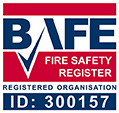
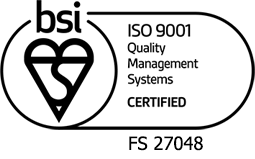
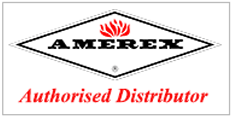
 Blackwood Fire began trading in 1983. We have an absolute belief in quality - it is the cornerstone of our company's culture. Our primary aim is to help you protect the lives and livelihoods of people and your organisation or business by ensuring that we only provide quality products that fully meet industry standards - also, by providing continuous training to our staff via recognised trade bodies, associations and the British Standards Institute (BSI). We strongly believe that promoting quality practices and dealing with everyone in a fair and honest manner adds value to organisations and businesses. Read more on our
Blackwood Fire began trading in 1983. We have an absolute belief in quality - it is the cornerstone of our company's culture. Our primary aim is to help you protect the lives and livelihoods of people and your organisation or business by ensuring that we only provide quality products that fully meet industry standards - also, by providing continuous training to our staff via recognised trade bodies, associations and the British Standards Institute (BSI). We strongly believe that promoting quality practices and dealing with everyone in a fair and honest manner adds value to organisations and businesses. Read more on our 